Connectors in the Nuclear Zone
Radiation-proof connectors allow robots to work in places where humans cannot safely tread.
By Jean Thilmany
The number of robots working at nuclear power plants — helping to shut down, clean up, and perform other duties that humans cannot, due to inaccessibility or the danger of radiation exposure — continues to grow. This rising demand for robotics stems from both the US and several European countries moving to decommission aging plants and ongoing cleanup efforts at the sites of the Chernobyl and Fukushima reactor disasters in the Ukraine and Japan.
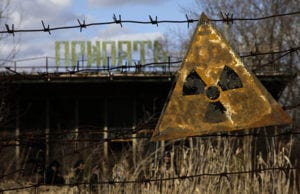
A radioactive sign hangs on barbed wire outside a café in Pripyat, Ukraine, which became uninhabitable after the Chernobyl disaster.
The 2011 Fukushima nuclear disaster inspired a global reevaluation of nuclear power plants that will ultimately prompt the closure of many more plants and require even more harsh-environment robots in the future. Germany plans to shutter the country’s 17 reactors by 2022, and has already shut down eight. Belgium, Spain, and Switzerland are also phasing-out nuclear power. According to the International Energy Agency, about 200 nuclear reactors will be shut down over the next quarter century, mostly in Europe
Nuclear cleanup projects aren’t the only settings that require radiation-hardened robotic workers. Robots around the world perform daily duties in nuclear facilities where radiation and high heat make it impossible for humans to accomplish necessary operational functions, including handling heavy radioactive loads, performing inspections, and repairing equipment.
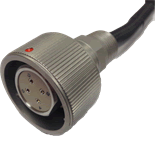
The NAMCO Plug-In Cable Assembly with stranded nuclear grade cable is available for a range of nuclear environments, including mild environment, harsh environment, and harsh environment with or without accident conditions.
To operate in these extremely harsh environments, these specialized robots rely on robust connectors made from materials that protect their sensitive electronics from radiation, heat, fluids, and other environmental hazards common to nuclear power plants. LEMO, TE, NAMCO, and AXON are some of the leading suppliers of these robust connectors and cable assemblies, which feature characteristics including radiation-resistant materials, high-temperature tolerances, and extreme harsh-environment capabilities.
The six companies that specialize in the complex and dangerous job of dismantling nuclear power plants — including Areva, Nukem Technologies Engineering Services, and Westinghouse — are increasingly reliant upon fleets of robotics with varying shapes and capabilities. For example, in 2015, PaR Systems Inc. delivered the world’s largest robotic nuclear crane to the Ukraine to facilitate ongoing cleanup at the Chernobyl Nuclear Power Plant. The enormous crane stands 315-feet tall — 10 feet taller than the Statue of Liberty — and includes two bridges, two carriage hoists, and a mobile tool platform.
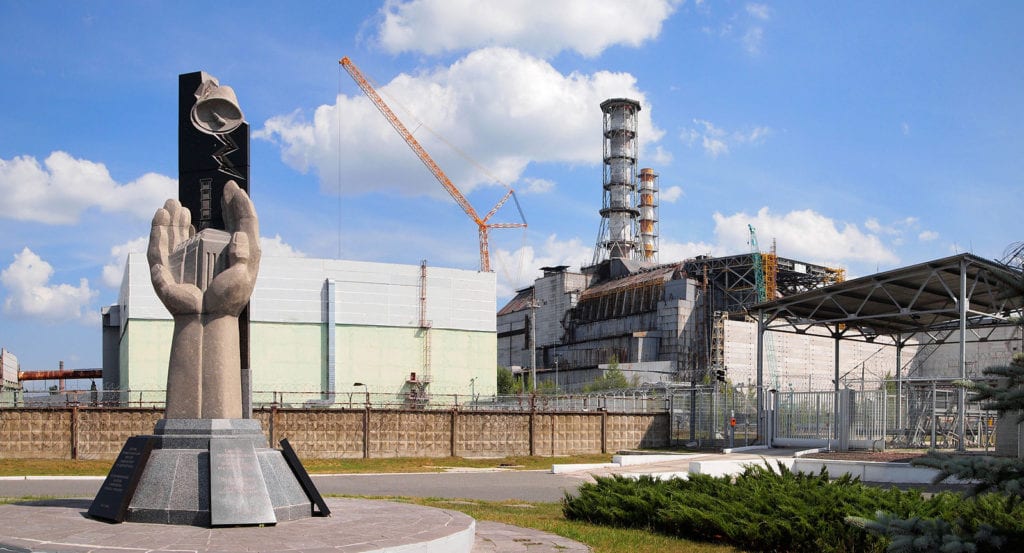
A view of the monument and Reactor 4 at the Chernobyl Nuclear Power Plant in Ukraine. (Photo Credit: Tiia Monto)
Connectors in the Zone
Robots created for use in nuclear power plants differ in a number of ways from their counterparts used in standard harsh industrial environment applications, such as manufacturing. In addition to having to withstand extremely harsh nuclear environments, these robust must also operate in different ways.
“Nuclear-zone robots don’t stay in one place. They’re mobile, moving things from side-to-side, and they include cameras and can measure things,” said Sascha Lambauer, product manager for TE Connectivity’s heavy-duty connectors.
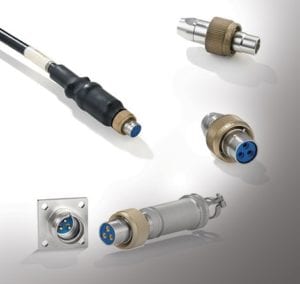
TE’s DEUTSCH DCIN Series Connectors provide secure, reliable performance in K1 and K2 nuclear zones.
TE’s heavy-duty connectors, such as the DEUTSCH DCIN Series, are designed for harsh environments where dust, water, extreme heat, pollution, and radiation are present, Lambauer said. The company also makes components and kits to help seal and insulate electrical connections in nuclear power plants.
Connectors that perform in nuclear environments need to comply with industry-accepted standards, including IEEE 323, IEEE 383, and other international standards. Robots that perform in nuclear environments must generally operate both independently and for long periods of time since human technicians typically can’t enter the dangerous plant environments robots are employed in for repairs and robots exposed to radiation become radioactive and cannot leave their environment for maintenance. “Humans can’t do maintenance work on the robots inside of these plants, so the reliability of their connectors and other components is a huge requirement,” Lambauer said.
For that reason, developers must ensure that all parts of the robot, including the connectors, can resist radiation for long periods of time, said Steven Lassen, LEMO’s product and applications manager.
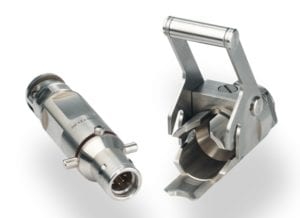
LEMO’s N Series remote-handling, self-latching connectors are suitable for operating in nuclear environments.
The N Series connectors from LEMO are designed for robotic manipulator arms in remote handling environments, such as the robotics that operate in hot cells, and for use on nuclear robots themselves, Lassen said.
“They’re hardened specifically to perform in nuclear spaces. For example, the connectors are made from stainless steel to resist radiation, and the cable glands are hermetically and environmentally sealed using EPDM, which resists radiation, can operate in high heat, and protect the connectors against both fluids and gases. Some connectors within the line use PEEK inserts, which are also radiation-proof.”
When using these connectors in hazardous or contaminated environments, remote-handling options should also be taken into consideration, Lassen said. The remote-handling option allows users to operate the connecting solution remotely, with the assistance of a teleoperator or a robot to ensure user safety.
Nuclear applications often require connectors to be frequently mated and unmated, so push-pull locking systems are widely considered the best option. Connectors like those in the N series are designed with special features that ensure correct mating, like a special taper that guides the connector in.
“There’s often an operator looking through a black and white camera to remotely mate these connectors,” Lassen said. “So, our connectors have a high-contrast band where the nub is. That way, the operator can verify that they’re fully mated when the black bands on the receptacle and the plug align.”
N-series connectors that are incorrectly mated awon’t lock into place, alerting operators that they’re attempting to mate incorrect parts, he added.
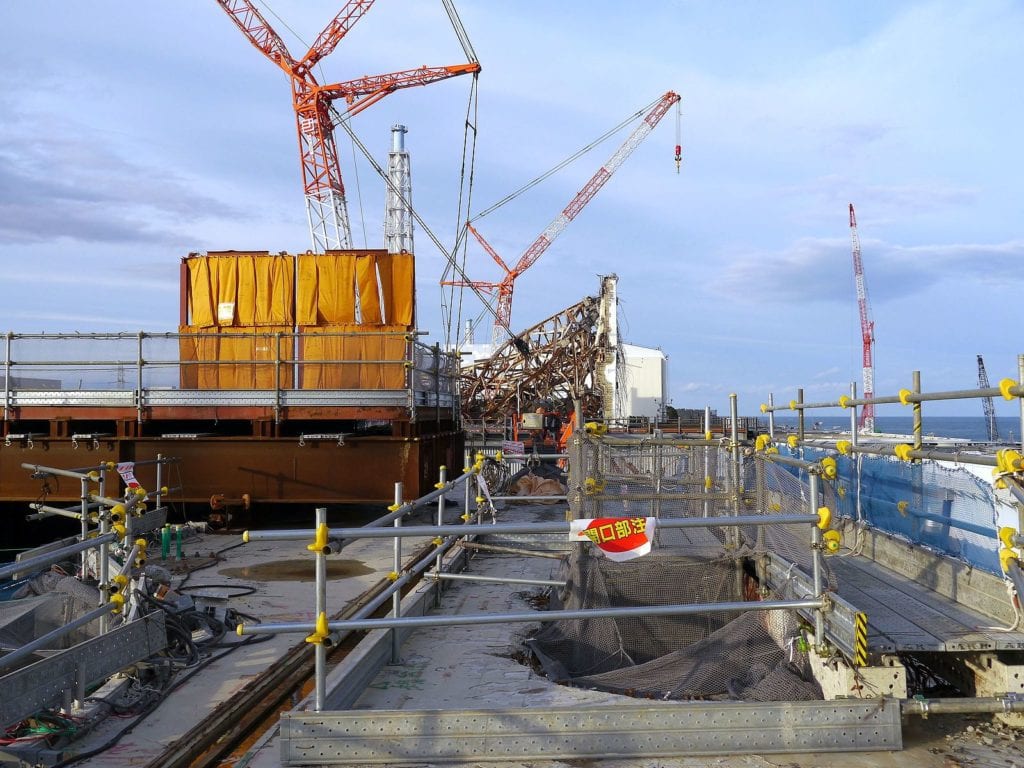
Fukushima Daiichi Nuclear Power Plant. The twisted metal and rubble in the middle distance is the top of Unit 3, where high radiation levels are slowing work to clear debris. The cranes have to be operated remotely from the Emergency Response Centre. (Photo Credit: Gill Tudor / IAEA, December 18, 2012)
When Robots Fail
When a cleanup robot at Fukushima failed, it inadvertently highlighted the importance of connectors on nuclear robots. Quince 1, the first robot to enter the facility after the disaster, measured radiation levels and collected dust samples and video footage in the power plant’s Reactor 2 building. Although it successfully executed several missions, it eventually got disconnected from its communications cable and got stranded within the building, according to Nuclear Engineering International. Scorpion, a Toshiba robot, met its demise there as well. Even so, plant operators said that “valuable information was obtained, which will help us determine the methods to eventually remove fuel debris.”
Connector companies learn from unsuccessful missions, and the next generation of harsh-environment connectors will be better able to withstand these extremely challenging conditions. Even robots that only complete part of their job saved a human from having to enter a nuclear zone. These unique robots, their operators, and their human colleagues are all reliant upon the right, robust, high-reliability connectors and components for longevity in their field.
Recently posted:
[related_posts limit=”10″]






